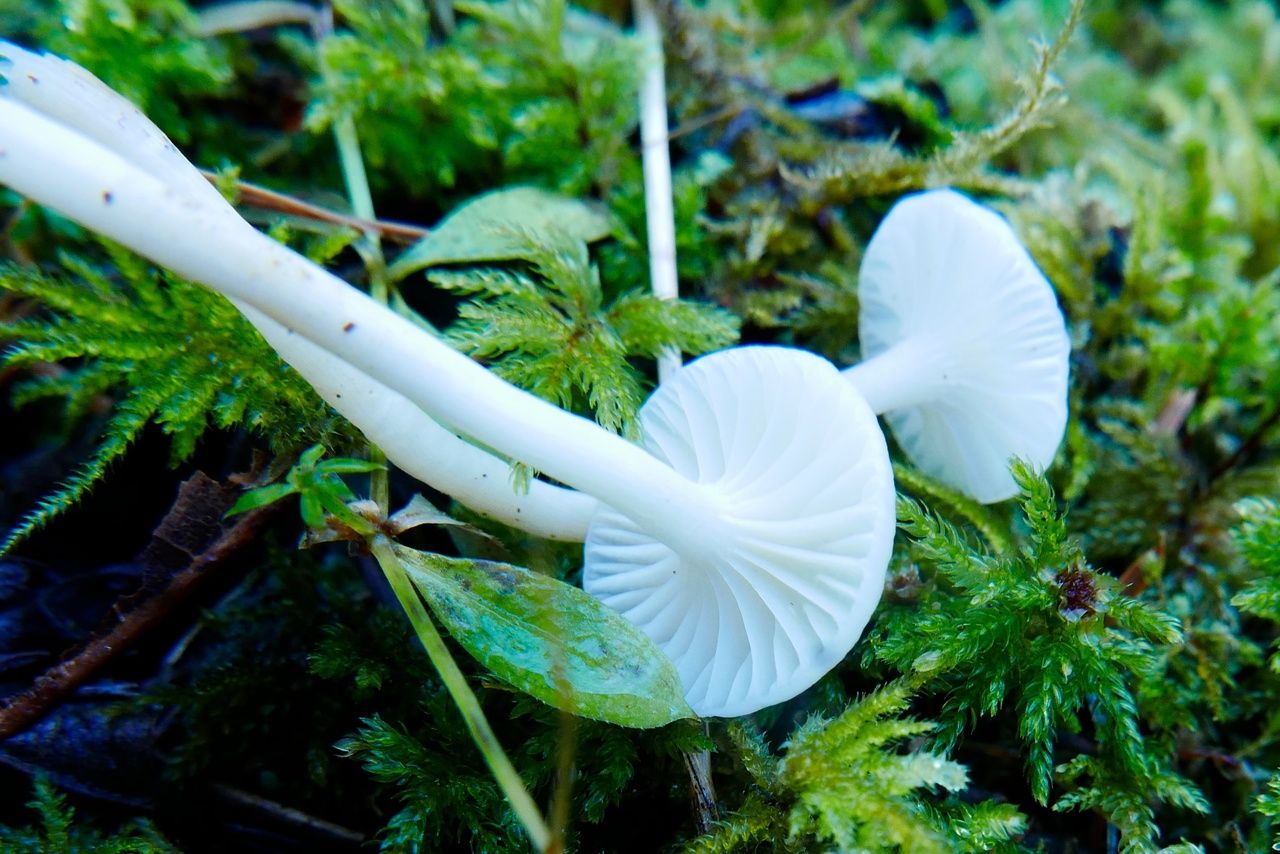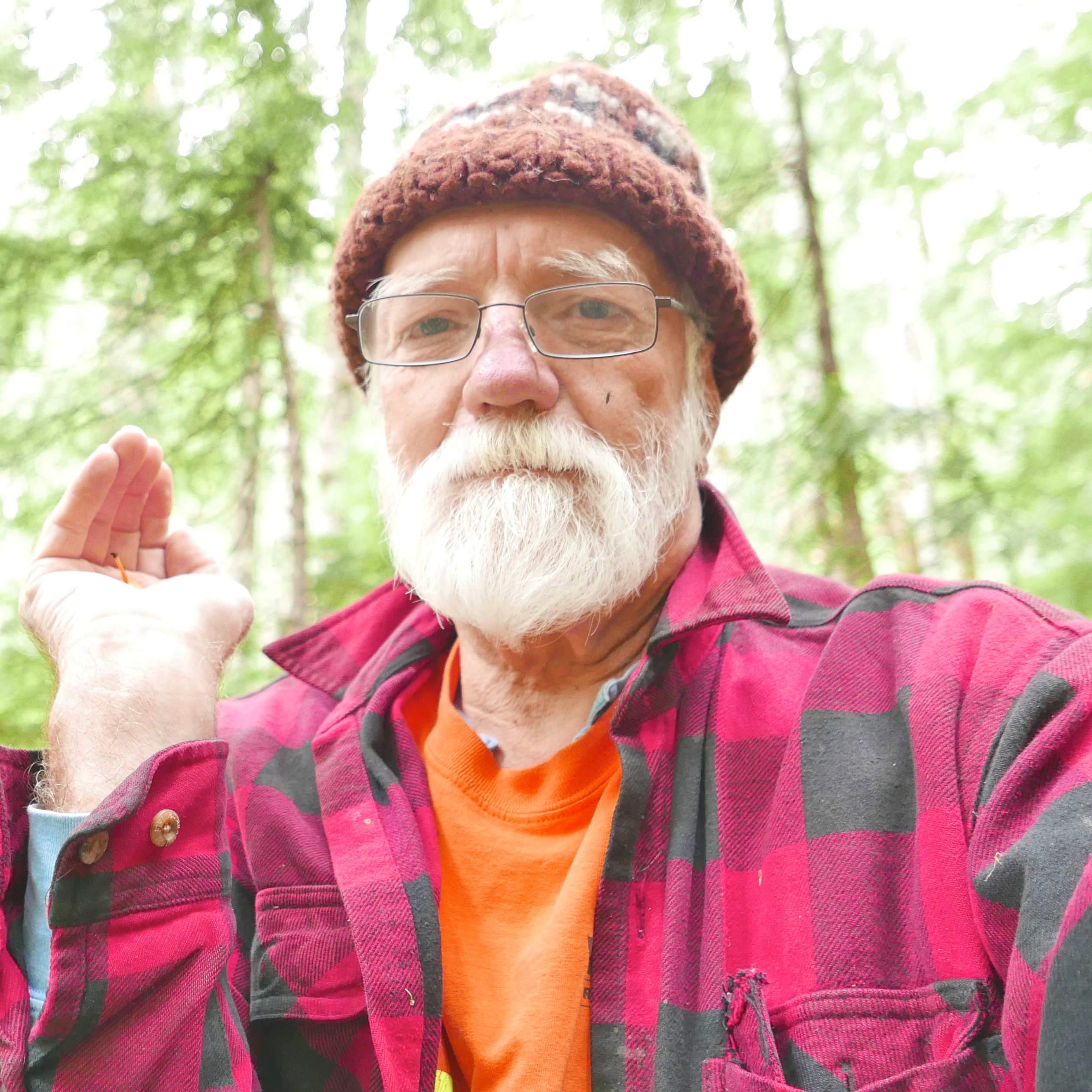The smell of Russian leather! That is how the rather plain looking white “Hygrocybe” russocoriaceus is described and how it is supposed to be identified in the field. Indeed, the name russocoriaceus is Latin for Russian leather.
It's a European waxy cap mushroom described in 1848, but lacking a preserved type specimen. Hesler and Smith, authors of the bible on American waxy caps, did not think that this European mushroom is found in North America. But in North American species of Hygrophorus they do describe a Hygrophorus lawrencei from a single mushroom group from Applegate Oregon, noting that it is similar to the Russian leather smelling mushroom from Europe. In this instance, however, they're describing the smell as an ”odor very strong of cedar”. Is this the same smell, going by a different name?
By 1985 Largent in his work on Californian fungi is calling the mushroom Hygrophorus russocoriaceus. He notes that ”when strong, the odor can be detected in the field up to 18 meters from the basidiocarps.” 18 meters! Good gracious - that is just short of 60 feet for a tiny mushroom! Largent goes on to say ”Often, however, in some specimens, the odor can be weak to absent or detected only with difficulty and imagination”. So, there you go, if you have difficulty detecting odor - use your imagination.
Then, in 1986, in Mushrooms Demystified, David Arora is calling the species Camarophyllus russocoriaceus and there is no mention of “lawrencei”. Arora goes on to say that it is “known only from the West Coast (in addition to Europe)”. By 2012, Waxcap Mushrooms of Eastern North America is calling it Hygrocybe russocoriacea again and mentions that it can be found in New York! It seems to have taken people a long time to find it on the East Coast so maybe it's extremely rare there? Or is there something else going on? For your scorecard, the Russian smelling mushroom has been called four different names so far - and the name is still not right.
What is missing from the above discussion is any mention of DNA results. An easy way to determine if specimens are indeed members of the same species is through DNA sequencing. In this case that would mean comparing sequences of the European mushroom with those found on the West Coast. The South Sound Mushroom Club (SSMC) has long ago become intrigued by the possibilities of DNA sequencing. Of the many results we've had in the past, many have led to new identifications, often quite unexpected for our small corner of the Pacific Northwest. Fascinating stuff for sure, and we will always be appreciative to the Mycoflora Project/FunDis for their part in this adventure!

And so the SSMC submitted a waxy cap smelling of cedar to be sequenced, a mushroom that had been turned in by star Evergreen student and mycologist Luca Hickey. The top match to Lucaʼs sequence was to an Alan Rockefeller mushroom sequence from California (98.64%). Alan lists it as Cuphophyllus russocoriaceus in GenBank. The question now became, are Alanʼs and Lucaʼs finds the same as the European mushroom?

There is just one sequence from the “genuine” European Russian leather-smelling mushroom in GenBank and that is from Kew. Kew is the large, trustworthy repository for fungal records and without a type specimen, a Kew result is about as good as one can hope for. It is listed as a Hygrocybe russocoriacea - and Lucaʼs and Alanʼs mushroom did not match the Kew mushroom; the matches were 88.28% and 87.82%. There is however one more sequence in UNITE (a European database for fungal sequences) for a Norway mushroom that does match the Kew mushroom. This suggests that Hygrocybe russocoriaceus is valid European species, and has been established a long time ago.
So where does that leave taxonomy? Since Alanʼs and Lucaʼs specimens do not match the European species going by that name they have to be a different species. I suspect Alan is right with the genus name of Cuphophyllus - he usually is. Alan - in a positive and growing trend - had included a Mushroom Observer number with his GenBank result. In that Mushroom Observer entry Alan hints of the suggested C. lawrencei name. Would the species name have to to go back to lawrencei? We do not get to use russocoriaceus here since that name was taken over a hundred years before the Oregon mushroom from Applegate, OR was ever found. That would mean the North American Russian leather-smelling - or rather cedar-smelling - mushroom would be - could be - Cuphophyllus lawrencei.
And if you are left confused as to what Russian leather smells like or are unable to detect the smell at all - some people cannot - you can always rely on the taste. Its taste is described as ”medicinal, or almost like cedar”. Cedar tastes medicinal?
So next time you gather a mushroom for sequencing, pay close attention to those two little boxes on the right side of the MP reporting slip; the box for odor and the box for taste. They are there for a reason!





